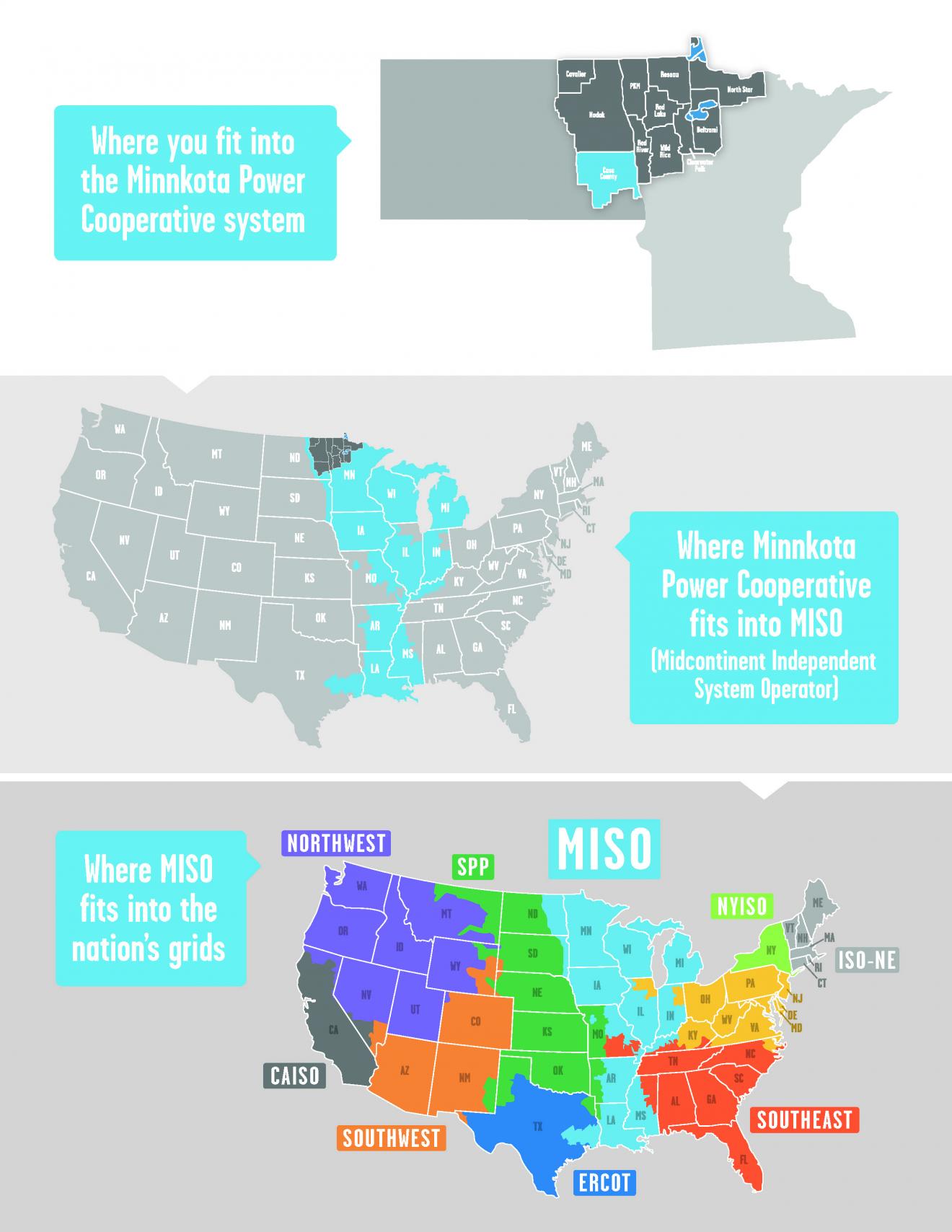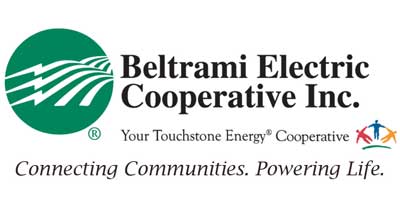North Dakota, Minnesota at risk of power outages this summer
America’s electric grid has become increasingly unstable – and it could begin impacting Minnkota Power Cooperative’s members this summer.
That’s why Minnkota is joining many of our nation’s grid operators and regulators in sounding the alarm on the vulnerabilities that are affecting power reliability. As the pace of change in the energy industry continues to accelerate, so does the risk of rotating power outages and other extended service interruptions. Minnkota’s eastern North Dakota and northwestern Minnesota service area is no longer immune to the large-scale grid challenges that have been experienced in Texas and California in recent years.
As Beltrami Electric Cooperative’s wholesale power provider, Minnkota takes its responsibility to provide reliable, resilient and responsible electricity seriously. The cooperative has more than enough generating capacity to meet the demands of its members through its coal, wind and hydro resources. But Minnkota does not operate on the grid alone. Utilities across the Upper Midwest are connected through Midcontinent Independent System Operator (MISO). Emergency events experienced in other parts of the MISO region can and do have impacts back into the Minnkota system.
One of the most significant industry issues is the retirement of baseload and dispatchable power plants – including coal, nuclear and natural gas – without adequate replacements. Wind and solar make up the majority of the new resources being added to the grid, but they are limited by the fact that they are only able to operate intermittently – when the wind is blowing or the sun is shining. While Minnkota supports moving toward a cleaner, more sustainable energy future, it is not something that can happen with the flip of the switch. It will take decades of planning and unprecedented technology development to achieve significant carbon reduction.
MISO expresses concerns
Minnkota is not alone in coming to these conclusions. MISO issued a dire warning in April that it does not have enough reliable power plant capacity on its system to meet its projected peak demand this summer. The result is an increasing risk of power outage events.
Minnkota both buys and sells surplus power in the MISO system, which estimates a 1,230-megawatt (MW) shortfall in power plant capacity to meet its reserve margin. For context, one megawatt-hour (MWh) is enough electricity to serve more than 800 homes with an hour’s worth of power.
“Due in large part to decarbonization goals set by our members and the states in our region, our resource fleet is increasingly reliant on intermittent and weather-dependent resources,” said Wayne Schug, vice president of strategy and business development at MISO. “As this trend continues in the future, MISO needs to evolve the grid, our markets, and our operational capabilities, which is just as complex as it sounds.”
In a recent interview in the Wall Street Journal, MISO CEO John Bear added to this point by saying, “As we move forward, we need to know that when you put a solar panel or a wind turbine up, it’s not the same as a thermal resource.”
MISO’s peak demand for electricity typically occurs in the summer months during the hottest days of the year. The organization is conducting training and exercises to prepare for worst-case scenarios and is also implementing lessons learned and best practices. Likewise, Minnkota’s energy marketing team is working to ensure it’s ready to respond to volatile market and reliability conditions.
NERC issues grim report
The North American Electric Reliability Corporation (NERC) – the federal regulatory entity responsible for the reliability of the nation’s electric grid – is also expressing concerns heading into the summer season. According to NERC, MISO is in the “high risk” category, and has the potential of “facing capacity shortfalls in its north and central areas during both normal and extreme conditions due to generator retirements and increased demand.”
NERC’s Summer Reliability Assessment notes that reliability challenges are being compounded by evolving demands on the power grid, which has grown increasingly complex as renewable energy assets are added.
“There’s clear, objective, inclusive data indicating that the pace of our grid transformation is a bit out of sync with the underlying realities and the physics of the system,” said John Moura, NERC’s director of reliability assessment.
Along with the changing power supply mix, NERC also identified extreme weather conditions, high seasonal demand for electricity, supply chain issues and cybersecurity threats as other risks impacting reliability.
What is Minnkota doing?
While there are challenges, Minnkota supports efforts to reimagine how electricity can be produced, delivered and consumed. But the implementation of these ideas must be met with caution and common sense. After all, there is a lot on the line. A resilient and reliable electric grid that affordably keeps the lights on is the cornerstone of the American economy and our national security. Any missteps in an energy transition of this magnitude can have irreversible consequences.
So, what can be done? Minnkota is only one of thousands of utilities across the country, but it is taking its own steps to protect itself from power reliability challenges.
- Training and education
Minnkota’s employees are trained to respond to emergency grid events and continuously work to shield members from the volatility of the grid and markets. The cooperative also invests significant time in helping member-consumers, lawmakers, business interests and other in the general public understand the challenges the industry faces and the complexity in providing reliable power to the region.
- Maintaining a diverse energy mix
Minnkota’s energy portfolio consists of a diverse mix of coal, wind and hydro resources. Working together, these facilities help ensure 24/7 reliability on the Minnkota system. Coal-based facilities remain the workhorse of the system and are routinely available to produce power during the vast majority of each year.
- Upgrading our power delivery systems
Minnkota is building, upgrading and replacing the power delivery resources that connect its communities. New technologies are being added to Minnkota’s grid to provide enhanced data and communication capabilities – all in an effort to respond more quickly to issues and improve overall reliability.
- Continuous cybersecurity evolution
Minnkota continuously works to protect the electric grid from physical and cyber security threats. Energy experts in Minnkota’s Control Center monitor the grid 24 hours a day to ensure the safety of the cooperative’s employees, infrastructure and data.
Strategically utilizing demand response
Minnkota has one of the most robust and effective demand response (also called off-peak) programs in the country. Through the program, Minnkota and its members can temporarily control electric heating, water heating and vehicle charging loads – shifting electrical demand when economical resources are not available.
By Ben Fladhammer, Minnkota Power Cooperative

